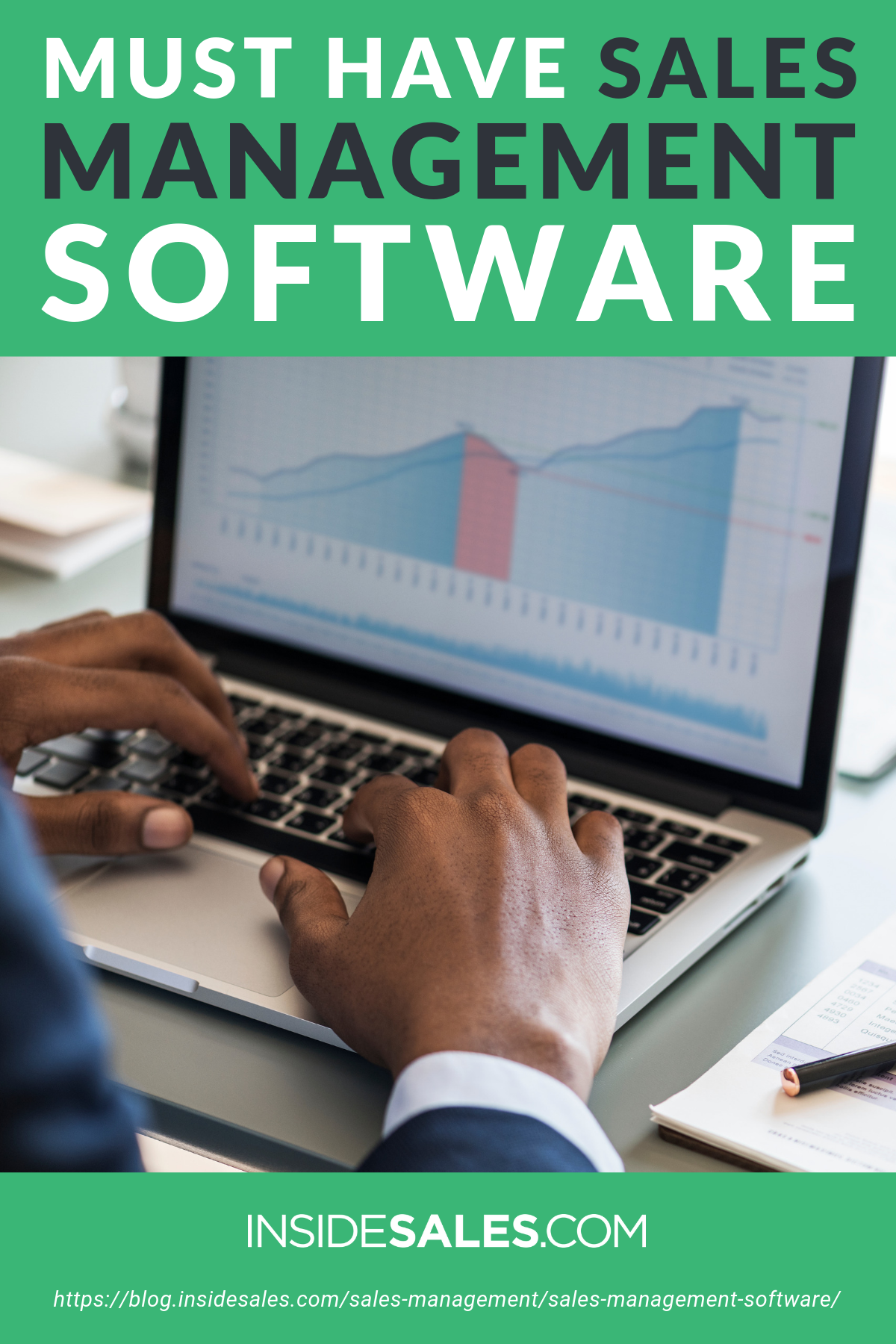Must Have Sales Management Software
Learn the different software you can use to optimize your sales management functions from Kyle Lacy, Lessonly’s Vice President of Marketing, in this episode of Sales Secret.
In this article:
- About My Guest — Who Is Kyle Lacy?
- Sales Management Software for Optimizing Stack
- Sales Management Software for Direct Mail
- Sales Management Software for Sales Cadence
- Sales Management Software for Project Management
- Sales Management Software for Email Marketing
- Sales Management Software for Sales Playbooks
- Important Tips on Getting A Software Vendor
Top Sales Management Software You Should Invest On
What Is Sales Management? This process involves sales force development, sales operations coordination, and the implementation of sales techniques. With proper sales management, the business could hit and surpass their sales targets.
About My Guest—Who Is Kyle Lacy?
Kyle Lacy is the Vice President of Marketing for Lessonly, an online training software. Their services include sales enablement, onboarding, and training customer service and sales teams.
The training they offer spans across software retail, e-commerce, and telecom.
Lessonly is Indianapolis-based, with a team of more than 100 employees. Kyle’s role consists of almost all top-of-funnel dimensions.
He also manages his own team of Sales Development Reps (SDRs) and Managers.
Before joining Lessonly, Kyle worked with Salesforce and ExactTarget, then spent a couple of years at OpenView in Boston.
Kyle’s hometown is Indianapolis, which is why he and his wife took the opportunity to move back by working in OpenView’s portfolio company, Lessonly.
During our discussion with Lacy, he shared with us the different sales management software he and his sales team use to improve their processes. These help them optimize their sales process and activities so they can be more efficient.
Sales Management Software for Optimizing Stack

Using sales management software
When it comes to optimizing their stack, Lessonly uses three different pieces of software to yield accurate information.
Initially, Kyle and his team thought about how they can source qualified accounts for their team of sales reps who need them. Before, their sales reps sourced these on their own for Account Executives.
They realized that the best thing they can do for their SDRs was to give them qualified accounts by sourcing these based off of market signals.
Those market signals could be fundraising or at inside sales, among others. This then became the foundation of their pursuit to optimize their stack.
Eventually, Lessonly got DataFox to provide this information for them. Now they’re tracking 80 different market signals within the platform.
Here’s how it works.
- DataFox comes up with accounts that they may find interesting.
- In turn, Lacy and his team have their sales representatives work on those accounts.
Lacy admitted that, on the marketing side, they are still working on how to qualify with intent. They recognized that they must first establish the account level and then work up from it.
Another software they use for optimizing stack is Sales Navigator, but it wasn’t enough to find the right contacts. This is why they supplemented it with ZoomInfo.
Lacy emphasized that the accounts are the foundation. You can only optimize your stack if you’re able to work up from an established foundation.
In reality, though, the leads are the problem for a lot of people. They may get lots of accounts, but they don’t know where to start.
For Lessonly, DataFox is the tool that helps them know which leads they should go after, then they use Sales Navigator and ZoomInfo to make sure that their SDRs have the right contact information on those leads.
Sales Management Software for Direct Mail
One of the core components of Lessonly’s sales strategy is direct mail. This is the best-performing medium for them, as Kyle revealed.
Together, DataFox and ZoomInfo provide the data that allows them to get accurate addresses of their leads. They did all this in-house, but now they also brought in Sendoso to take care of their direct mail enablement.
We asked Kyle for tips when it comes to utilizing direct mail, and he shared interesting insights.
He said the most important thing is to involve your reps in the process, especially if you’re doing it for a sales audience. Whether it’s handwriting cards or using Sendoso, getting them involved in the process is important.
Kyle admitted that you cannot always rely on direct mail for direct sources, but it will drive sales pipeline faster.
Based on Lessonly’s experience, the best-performing direct mail is not about their product — it’s about their brand. One way Lessonly promotes their brand is through their “Golden Llama award,” as a Llama is their mascot.
Every quarter, they give this to an employee who exhibits their values. This is what they highlight in their direct mail to prospects, because it shows their values, not a feature set.
For Kyle, sending creative coffee cards is also a great way to reach out. They allow Lessonly to stand out from the other direct mail that prospects receive.
Sales Management Software for Sales Cadence
For Lessonly, using direct mail as their medium meant adding contacts on top of the funnel. Each SDR’s task is to do 25 a day.
To track this properly, they need salesforce dashboards, which is why they now use SalesLoft for cadences.
Applying this process is important, and so they needed to make sure that the sales team is doing it. Through cadences, they can also ensure that their team is able to keep up on the activity level they expect them to.
When asked what kind of advantage cadences give their sales team, Kyle said it’s the process that they provided. Their sales team can follow the process so they can get in front of prospects.
The secondary advantage is the standardization around messaging.
Kyle shared that, before, their SDRs freely did what they wanted, so their cadences differed from each other. The problem with this is that they can’t yield a data set they can use for decision-making.
Everybody did something different, and each one used a different messaging. This process may work, but you will get to the point where you cannot create a database from the information you have.
Not setting a standard for your sales team will only let you keep track of scores. You’re not trying to create better actions in the future, which is the number one thing in cadence tracking.
Through tools like SalesLoft and XANT, they can set the process their SDRs can work with.
RELATED: The 5 Step Process to Building a Sales Cadence That Works
Sales Management Software for Project Management
Kyle introduced us to two software for project management —Trello and monday.com.
Their team uses Trello to keep track of their spreads, tasks, and blockers — basically everything they do as a team. When projects started to become more robust for their team of 11, they discovered that Gantt charts weren’t working on Trello.
As a result, their team wasn’t able to manage their to-do’s and tasks very well.
That’s when monday.com came in. Kyle’s team started to use it to keep track of their bigger projects, such as their enterprise campaign and direct mail campaign.
They integrated these two tools for their day-to-day tasks and big project pieces. Now they have two software they can rely on for project management.
Sales Management Software for Email Marketing

Email marketing with sales management software
Another software Lacy shared with us is Sigstr. This is an Indianapolis-based company offering email marketing services.
One of their offers is email signature marketing. They can set up your email signature to redirect recipients to a landing page, which is typically your company website.
This way, people can learn more about you and your business just from the email you send them.
Sigstr also has a Relationship Intelligence functionality, which uses your email inbox to find connections among contacts.
For instance, if someone within your company has already interacted with a specific lead, Sigstr can tell you who it is. This can save anybody in the organization from spending time and energy establishing a relationship from scratch.
The Relationship Intelligence feature is especially useful for large organizations. Sigstr believes that the email inbox is the most important relationship we have with our network, as we spend a lot of our time here.
This is why they provide ways for companies to maximize the use of their email inbox.
Sales Management Software for Sales Playbooks
To keep track of client information, Lessonly uses Dooly. It mainly assists their Account Executives and SDRs in note-taking.
With the help of this software, they can keep track of what is happening in every sales meeting. As Lacy put it, Dooly makes it easier for them to input data in their CRM.
Important Tips on Getting A Software Vendor
When it comes to the evaluation of sales management software, there are three things you need to remember:
- The software should be able to fill a hole in your sales process.
- You should let the vendor know that you expect a 1-to-1, if not 3-to-1, return on your spend for their platform.
- Make a decision based on the return of investment.
Follow these basic guidelines so you can pick the right sales management software that will yield the best results.
If you want to get in touch with Kyle Lacy, you can send him a message on LinkedIn. You can also check out Lessonly’s website for more info.
The main purpose of sales management software is to make the sales process more efficient by automation. Keep in mind that you need to carefully consider its purpose and the return it will yield.
In this way, you can choose a platform that will not only optimize your processes, but will also give you successful sales.
Which one of these sales management software can you use for your own sales team? Let us know in the comments section below.
Up Next: 10 Sales Management Software And CRMs Used By Sales Teams

